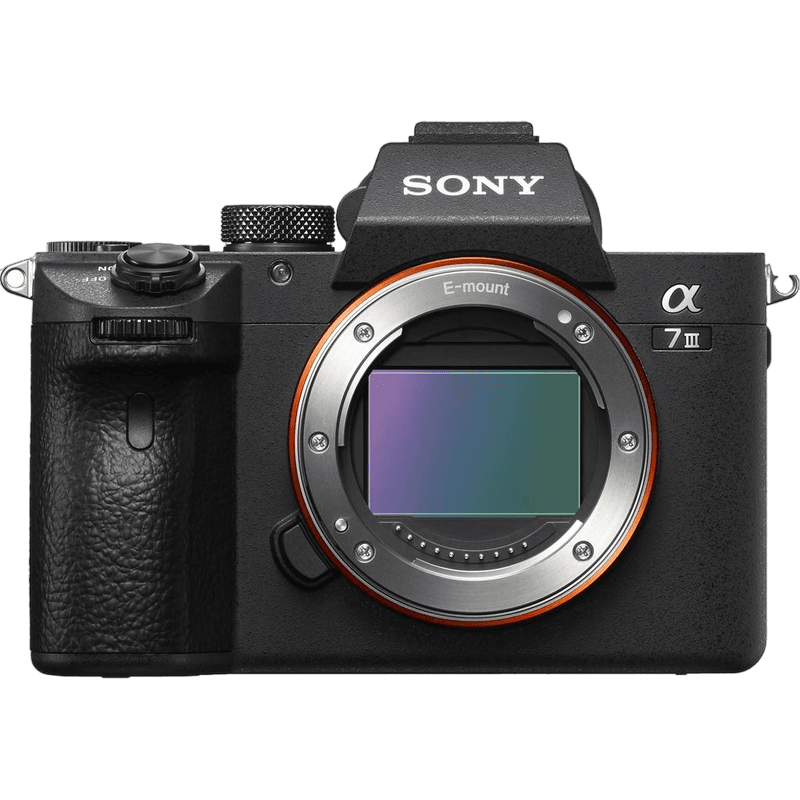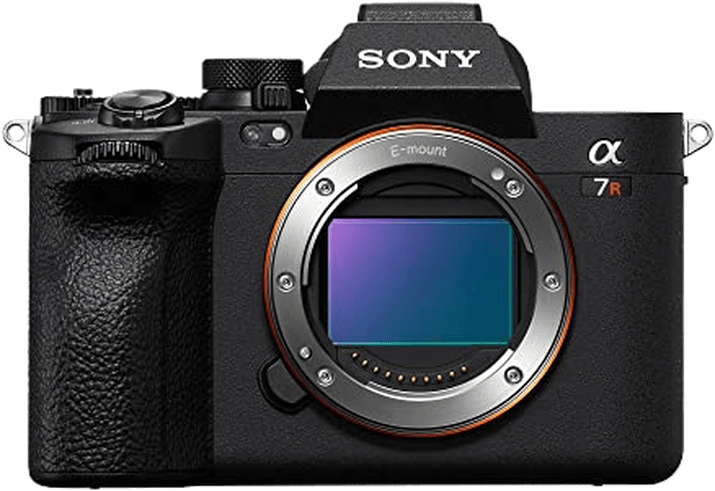Sony a7 III vs a7R V Comparison
Sony a7 III

Sony a7R V

The Sony a7R V outperforms the Sony a7 III with a score of 85 compared to 81. Both cameras are mirrorless and share similarities in size and weight, with the a7 III being slightly smaller and lighter. The a7R V, released in 2022, has advantages over the a7 III, which was launched in 2018. Its higher score reflects its superior performance and features.
However, the Sony a7 III has its merits, such as a lower launch price of $2000 compared to the a7R V’s $3999. This makes it a more budget-friendly option for those seeking a reliable camera without breaking the bank.
Taking these factors into account, the Sony a7R V is the better camera for those seeking top-notch performance and features, while the Sony a7 III offers a more affordable option with solid capabilities.
Sony a7 III vs a7R V Overview and Optics
The Sony a7R V emerges as the winner in optics, scoring 85/100 compared to the Sony a7 III’s 81/100. Both cameras share several specifications, including a CMOS sensor, full-frame sensor size, 10 fps shooting speed, Sony FE lens mount, and image stabilization.
The a7R V outshines the a7 III with its higher megapixel count of 61, offering more detail and resolution in images. This advantage is particularly beneficial for photographers who require large prints or extensive cropping. Additionally, the a7R V features the Bionz XR processor, which is an upgrade from the a7 III’s Bionz X processor. This improvement results in better overall performance and faster image processing.
On the other hand, the a7 III holds a slight edge in sensor quality, as evidenced by its DXOMARK score of 96, compared to the a7R V’s 94. This difference may translate to better dynamic range and low-light performance. However, the gap is minimal and may not be significant for most users.
Taking these factors into account, the Sony a7R V is the superior camera in terms of optics, thanks to its higher megapixel count and upgraded processor. However, the Sony a7 III remains a strong contender, especially for those who prioritize sensor quality. Ultimately, the choice between these two cameras will depend on individual needs and preferences, with both models offering impressive performance and features.
Sony a7 III vs a7R V Video Performance
The Sony a7R V emerges as the superior camera in terms of video capabilities, boasting a video score of 100/100 compared to the Sony a7 III’s 70. This significant difference in scores reflects the varying strengths of each camera’s video features.
Both cameras share some common specifications, such as 4K video resolution and a maximum video dimension of 3840 x 2160. However, the a7R V pulls ahead with its extraordinary 8K video resolution and a maximum video dimension of 7680 x 4320. This means that the a7R V can capture videos with much higher detail and clarity.
Another notable advantage of the a7R V is its higher maximum video frame rate of 120fps, compared to the a7 III’s 30fps. This allows the a7R V to capture smoother and more realistic motion, making it ideal for shooting fast-paced action or creating slow-motion footage.
While the a7 III may not outperform the a7R V in terms of video capabilities, it still offers decent 4K video quality and a respectable 30fps frame rate. These features make it a suitable choice for casual videographers or those on a tighter budget.
Considering the significant differences in video scores and the superior features of the a7R V, it is clear that this camera is the better option for those seeking advanced video capabilities. However, the a7 III remains a viable choice for users who prioritize affordability and still desire quality 4K video.
Sony a7 III vs a7R V Features and Benefits
The Sony a7R V emerges as the winner in this comparison with a feature score of 87/100, surpassing the Sony a7 III’s score of 81/100. Both cameras share several specifications, including a touchscreen, flip screen, WiFi, and Bluetooth capabilities. However, neither camera offers GPS functionality.
The a7R V boasts a larger screen size of 3.2 inches compared to the a7 III’s 3-inch screen. The a7R V also has a significantly higher screen resolution, with 2,100,000 dots compared to the a7 III’s 921,600 dots. These differences contribute to the a7R V’s superior feature score and provide users with a better viewing experience when composing and reviewing images.
The a7 III, despite its lower feature score, still offers some advantages. It shares the same touchscreen, flip screen, WiFi, and Bluetooth capabilities as the a7R V, ensuring that users will not miss out on any essential features. Additionally, its 3-inch screen size may be more suitable for photographers who prefer a more compact camera.
When considering each camera’s features, the a7R V stands out as the better option due to its larger screen size and higher screen resolution. These improvements provide a more enjoyable user experience when capturing and reviewing images. On the other hand, the a7 III remains a solid choice for those who prefer a more compact camera with essential features. Ultimately, the choice between these two cameras will depend on individual preferences and priorities.
Sony a7 III vs a7R V Storage and Battery
The Sony a7R V and the Sony a7 III have two memory card slots and use the same NP-FZ100 battery type. The memory cards accepted by the a7 III are SD/SDHC/SDXC and Memory Stick Duo/Pro Duo/Pro-HG Duo, while the a7R V accepts SD/SDHC/SDXC and CFexpress Type A cards.
The a7 III offers longer battery life, with 750 shots per charge compared to the a7R V’s 530 shots. This makes the a7 III more suitable for extended shooting sessions without access to power outlets.
Although the a7R V has a higher score for storage and battery, the a7 III’s longer battery life may appeal to some users. Ultimately, the choice between these cameras depends on individual preferences and shooting requirements.
Sony a7 III vs a7R V – Our Verdict
Are you still undecided about which camera is right for you? Have a look at these popular comparisons that feature the Sony a7 III or the Sony a7R V:

